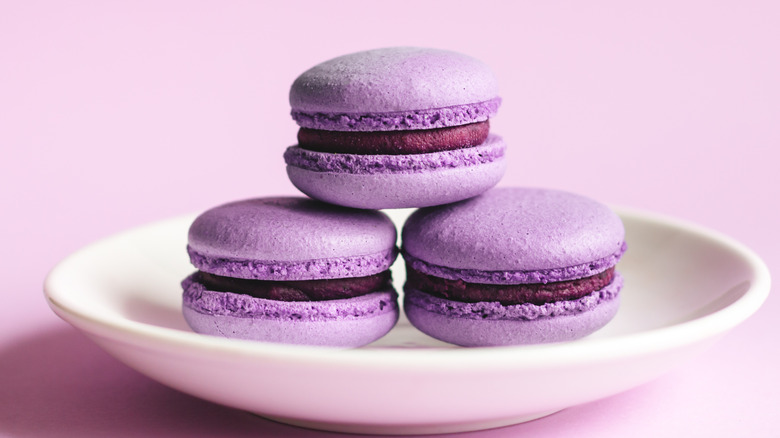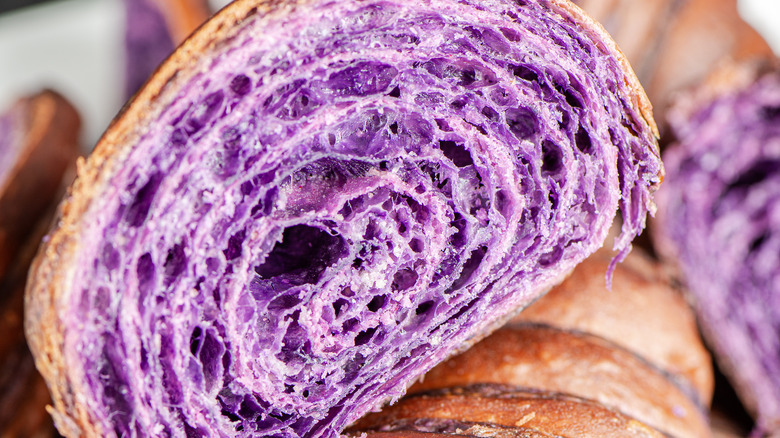What You Need To Know About Baking With Ube
Ube, a beautiful purple yam with nutritional benefits and the beloved heirloom produce of the Philippines, has gained global recognition and popularity and taken the baking world by storm. Baking with ube or turning it into a dessert or drink like ube latte is a trend that's here to stay. Before you use it as a photogenic baking ingredient, however, here are some facts you need to know.
First, you will probably never find fresh ube at your local supermarket, grocery store, or even Asian specialty market within the United States. In fact, even in the Philippines itself, it is hard to find fresh ube. That fresh purple sweet potato or purple yam you see at your local supermarket is probably Okinawan sweet potato, Stokes purple, or taro, and not ube.
So, how can we bake with ube if we can never source it fresh? Luckily, for us fans of this beautiful purple tuber, we can find ube in processed forms, such a powdered ube, ube halaya (or jam), ube extract, or flash-frozen, grated ube. While most of these products are imported from the Philippines, more and more U.S.-based companies are making ube-based products that are perfect for our baking needs. For example, Fila Manila makes a delicious ube coconut spread that was even brought on to SharkTank. Halo Pantry makes colorless ube extract that is easy to bake with.
While you may never bake with fresh ube, it's easy to make desserts with processed ube products
Ready to bake with ube? If you're a beginner, we recommend to first experiment with ube extract. Ube extract usually contains no real ube; however, it will make your lattes, ice cream, cookies, cakes, croissants, and other baked goodies vibrantly purple. Ube's tasting notes, such as nuts and vanilla, will be more pronounced when you use ube extract. Simply mix the ube extract with your wet ingredients when you're making dough or batter. For lattes, you can mix a few drops into your drink.
If you have ube halaya handy, you can use it like you would use other jams. For example, instead of using strawberry jam when making Linzer cookies, use ube halaya as the filling. Or consider mixing ube halaya into buttercream or frosting to fill macarons or top cupcakes. Of course, you could also just use ube halaya as a jammy spread for toast.
As for powdered ube, it's so prettily purple, making it perfect to dust over cookies. You can also mix ube powder with the dry ingredients when making bread or cookies. Finally, frozen grated ube is great to incorporate into recipes that benefit from added moisture and tenderness, like our ultimate fudgy brownies recipe. After thawing the frozen ube, simply fold it into the brownie batter and bake as usual.

